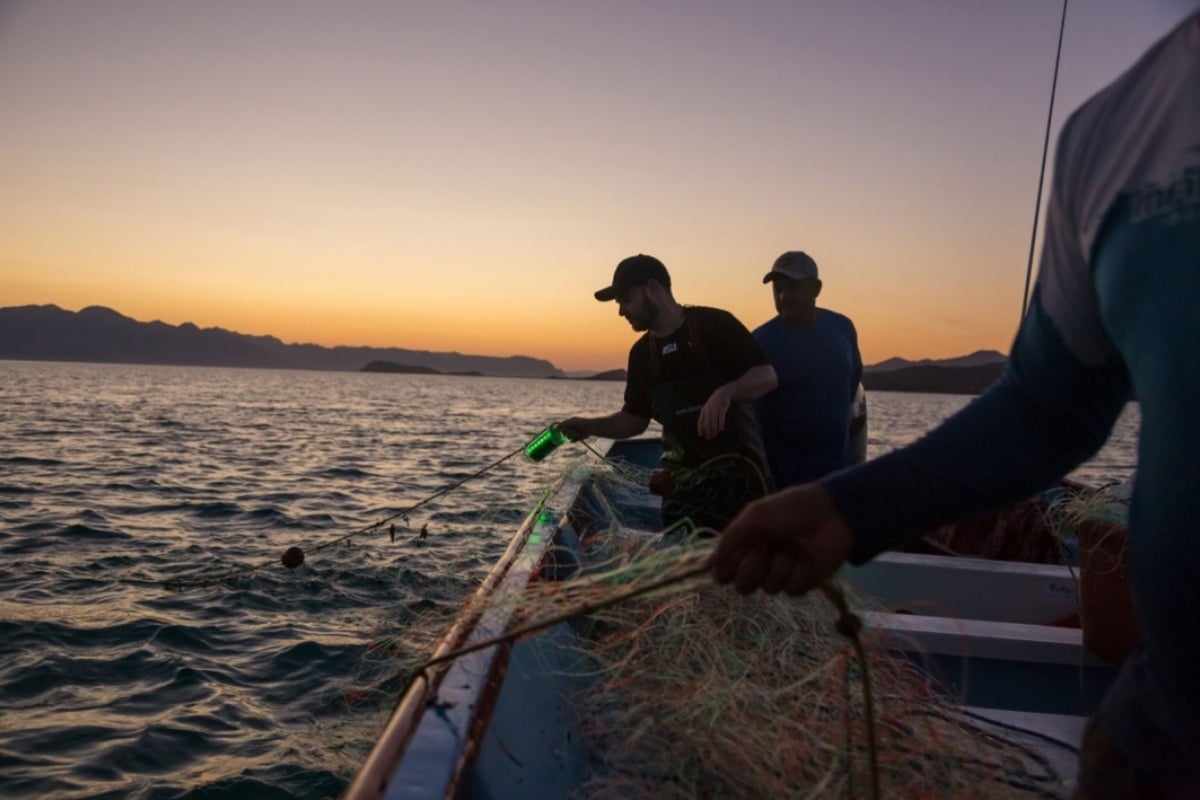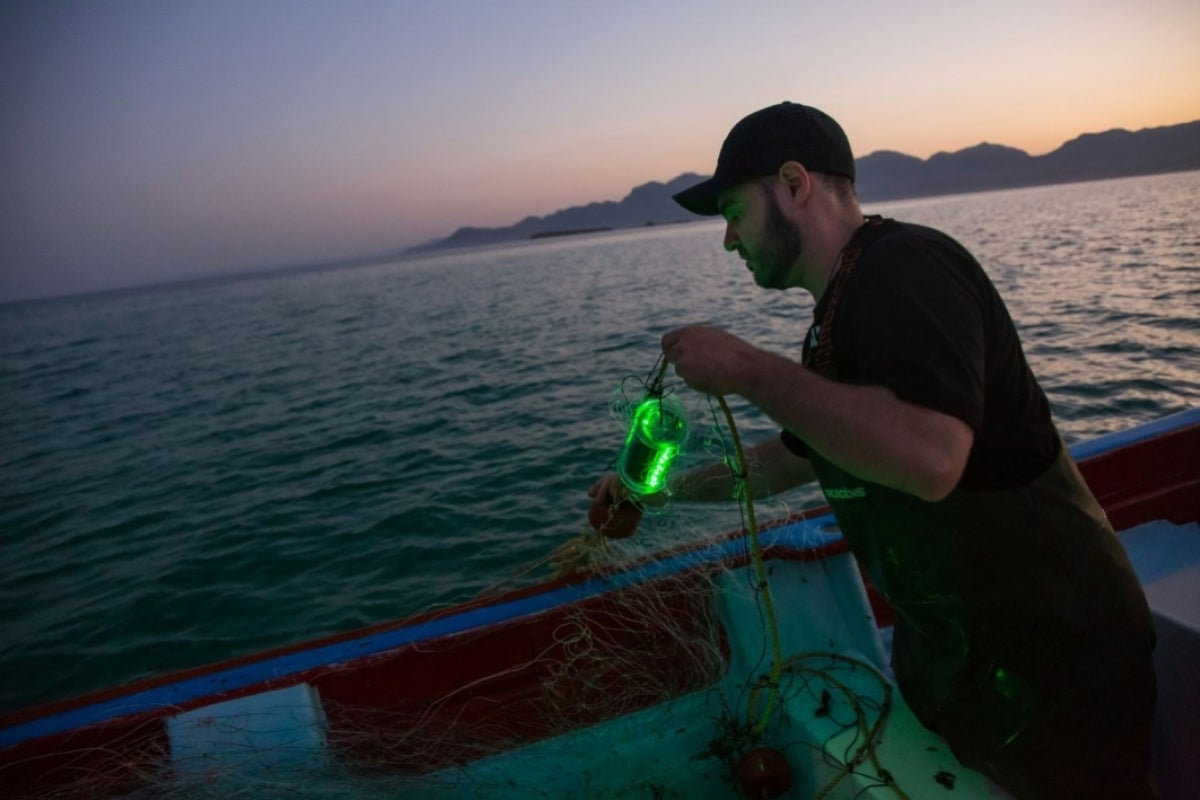ASU researcher awarded grant to improve sustainable fishery practices

ASU Assistant Research Professor Jesse Senko in the field. Photo courtesy Jesse Senko
Despite their popularity, gillnets and pound nets — the world’s most commonly used fishing nets — sometimes have the unintended consequence of capturing, injuring and killing nontarget marine species like sea turtles, seabirds, sharks and marine mammals.
This phenomenon, known as bycatch, has harmed coastal ecosystems and furthered the decline of endangered species globally.
Jesse Senko, an assistant research professor for Arizona State University's School for the Future of Innovation in Society, found that adding LED lighting to gillnets leads to a reduction in bycatch — but his research team still sees plenty of room for improvement.
Senko was recently announced as a grant recipient of Schmidt Marine Technology Partners’ Global Fisheries Initiative, which aims to support sustainable practices for fisheries worldwide. He and his team will use this funding to advance their research even further.
According to Senko, a crucial component of this project involves working with governmental fishery agencies to integrate artificial illumination into national management schemes, as well as working with fishers directly to ensure they have a voice in the development of such schemes. Additionally, the team will create a gear-lending program that provides access to the illuminated nets in exchange for performance feedback from fishers who use them. These components will improve socialization and access to this important emerging technology.
“This is the type of social and cultural innovation that is needed to pave the way for net illumination to be adopted by fisheries on national, and eventually global, scales,” Senko said. “The technology itself is only one small part of our innovation equation.”
The team comprises Senko, Mike Osmond, a senior program officer on the World Wildlife Fund U.S. Oceans Team, and John Wang, a fisheries ecologist at the National Oceanic and Atmospheric Administration's Pacific Islands Fisheries Science Center in Honolulu. They are leveraging a combined 75 years of experience in bycatch research and technology development to identify three critical steps toward widespread adoption of net illumination: scaling solar-powered light manufacturing for nets, increasing illuminated net usage by testing solar-powered lights in global bycatch hotspots and evolving artificial net illumination technology to be used with other types of fishing gear.
“We are delighted to be funded by Schmidt Marine Technology Partners’ Global Fisheries Technology Initiative,” said Senko, who serves as the lead principal investigator on the project.
The newly acquired funding will help scale up the manufacturing of solar-powered lights by shifting production to a private company. Eventually, this shift will pave the way for further expansion to companies that can produce lights in the thousands per batch.
“Ultimately,” Senko said, “this scaling will bring costs down while transferring technology to other countries and allowing them to lay claim to fostering manufacturing and production of their own national sustainable fishing technologies.”
Schmidt Marine Technology Partners is a program of the Schmidt Family Foundation.
Learn more about Senko's research here:
https://news.asu.edu/20220127-discoveries-saving-seas-lighted-nets
https://news.asu.edu/20200107-solutions-asu-jesse-senko-solar-fishing-lights-sea-turtles
More Science and technology

ASU researcher part of team discovering ways to fight drug-resistant bacteria
A new study published in the Science Advances journal featuring Arizona State University researchers has found…

ASU student researchers get early, hands-on experience in engineering research
Using computer science to aid endangered species reintroduction, enhance software engineering education and improve semiconductor…

ASU professor honored with prestigious award for being a cybersecurity trailblazer
At first, he thought it was a drill.On Sept. 11, 2001, Gail-Joon Ahn sat in a conference room in Fort Meade, Maryland.…


